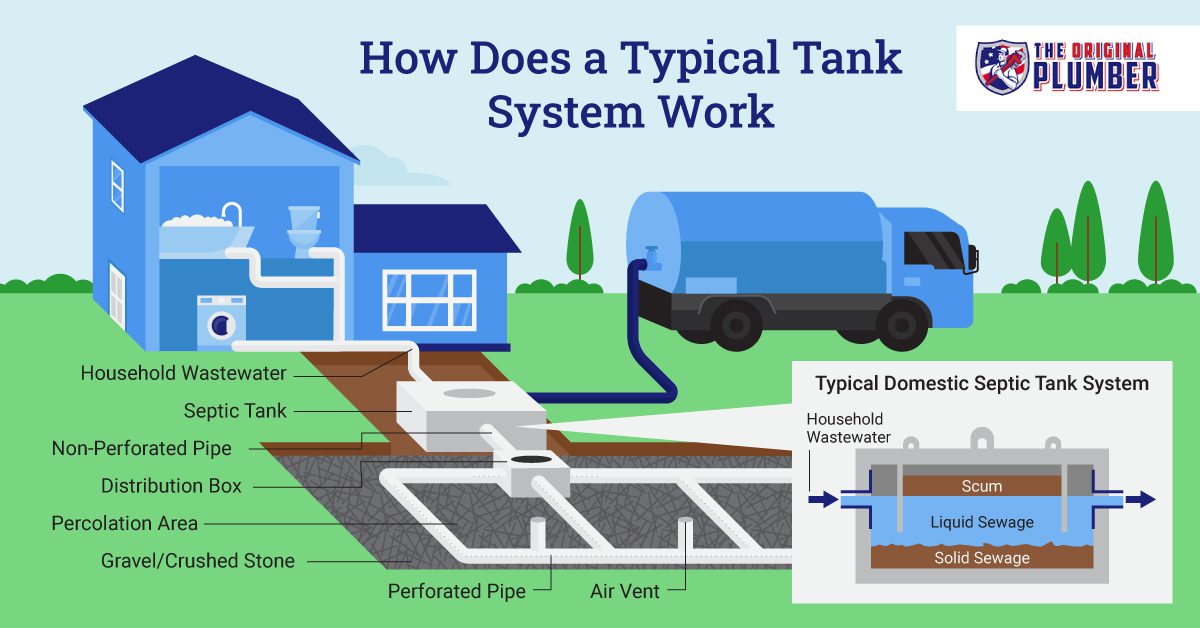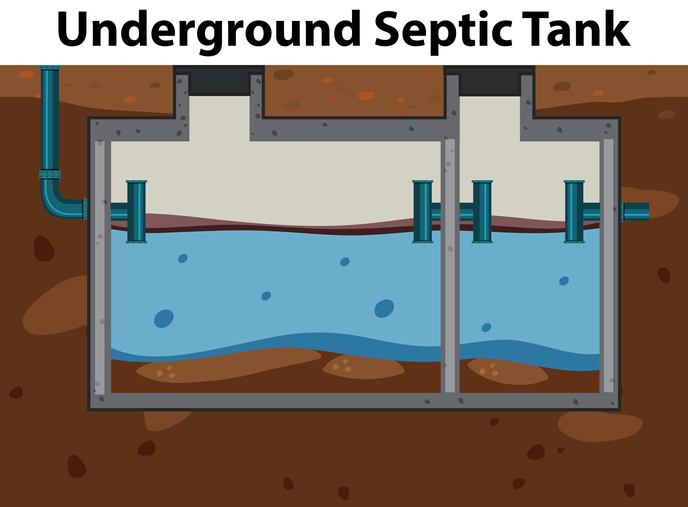Decoding the Language of Septic System Services: A Glossary of Terms for Clear Interaction and Recognizing
In this post, we'll aid you decipher the language of septic storage tank services with a convenient glossary of terms. From recognizing the basics of your septic container to dealing with sludge accumulation, we'll give clear explanations to make sure clear communication and understanding.
Septic Container: Understanding the Fundamentals

If you are not familiar with septic systems, they are below ground containers that deal with and hold wastewater from your house. These containers are an important part of your home's plumbing system, liable for securely and successfully managing the waste generated by your daily tasks. Comprehending the essentials of septic systems is critical in order to guarantee their appropriate performance and prevent expensive repair services.
A septic system contains two main parts: the container itself and the drainfield. The storage tank is where the wastewater streams right into, and it is created to separate solids from liquids. The solids clear up at the bottom of the tank, creating a layer of sludge, while the liquids, recognized as effluent, increase to the top. The effluent then moves right into the drainfield, where it is more treated and spread into the surrounding dirt.
Regular upkeep of your septic container is vital to protect against problems such as obstructions, backups, and system failures. It is suggested to have your container pumped every three to 5 years, depending on its dimension and usage. In addition, it is necessary to be conscious of what you purge down the tubes and commodes, as certain chemicals and products can damage the bacterial balance in the container.
Drain Area: The Function of Dirt in Waste Disposal
To preserve the correct capability of your septic container system, it is important to understand the role of the drainpipe area in waste disposal and exactly how the bordering dirt plays an essential role in this process. The drain area, likewise called the leach field or absorption field, is a vital component of a septic system. Its main feature is to filter and deal with the wastewater that drains of the septic system.
Once the wastewater leaves the sewage-disposal tank, it is distributed uniformly throughout the drainpipe field through a network of trenches or pipes. The drainpipe area includes a layer of crushed rock or rock, which assists to disperse the wastewater evenly and promote efficient filtering. Listed below the crushed rock layer, there is a layer of soil that serves as a natural filter.
The dirt in the drainpipe field plays a crucial duty in the treatment of wastewater. As the wastewater percolates with the dirt, it undertakes a natural process of filtering and filtration. The dirt works as a biological and physical filter, removing damaging bacteria, viruses, and various other impurities from the wastewater.
The make-up and top quality of the soil are vital for the efficient performance of the drainpipe field - septic tank pumping. The soil ought to have good percolation prices to enable the wastewater to move via it conveniently. Additionally, the soil needs to have sufficient oxygen levels to support the development of aerobic bacteria, which aid in the failure of raw material in the wastewater

Effluent: the Fluid Waste From Your Septic System
As the wastewater leaves the drainpipe field, it is referred to as effluent, and it is necessary to understand the features and administration of this liquid waste from your septic tank. Effluent is the term used to explain the cured wastewater that moves out of your sewage-disposal tank and right into the drainpipe field. septic tank pumping. This fluid waste consists of a mixture of water, raw material, and dissolved solids
Effluent ought to be clear and totally free of any kind of unpleasant smells. If you discover any kind of nasty scents or discoloration, maybe a sign of an issue with your septic system. Normal upkeep and pumping of your septic tank can aid ensure that the effluent remains clean and cost-free from impurities.
Appropriate administration of effluent is essential to avoid contamination of the surrounding environment. The drainpipe field is developed to filter and deal with the effluent before it gets in the soil. It is necessary to avoid any tasks that might possibly harm the drainpipe field, such as car parking lorries or planting trees with deep origin systems.
Sludge: Dealing With Strong Waste Buildup
When managing solid waste buildup in your septic tank, appropriate management of sludge is crucial. Sludge refers to the thick layer of strong waste that gathers at the bottom of your sewage-disposal tank in time. Otherwise handled correctly, sludge can cause different issues, such as clogging, back-ups, and even system failure.
Normal maintenance is critical to avoid sludge accumulation. It is advised to have your septic system pumped every 3 to 5 years, depending on the size of your family and the storage tank's capacity. Pumping gets rid of the accumulated sludge, permitting your septic system to operate efficiently.
Along with routine pumping, there are a few actions you can take to decrease sludge buildup. First, bear in mind what you purge down the drainpipe. Prevent dealing with non-biodegradable things, such as paper towels, baby diapers, and sanitary items. These can add to sludge buildup. Second, consider making use of septic-safe products that won't interrupt the all-natural microbial equilibrium in your system.
Pumping: Preserving the Wellness of Your Septic Container
Keep the wellness of your sewage-disposal tank by regularly pumping it. Pumping is a crucial upkeep job that assists prevent problems and guarantees the proper functioning of your septic system. Gradually, strong waste and sludge collect in the storage tank, which can cause obstructions, back-ups, and also system failing. Pumping eliminates these collected solids, permitting the container to proceed running efficiently.
Routine pumping is recommended to stop the sludge from reaching high levels. The frequency of pumping relies on numerous elements such as the size of the storage tank, the number of owners in your family, and the usage of water. Generally, septic systems need to be pumped every 3 to 5 years. However, it's essential to note that every system is one-of-a-kind, and it's finest to consult with a get redirected here professional to establish the optimal pumping schedule for your details situation.
Verdict
So there you have it: an useful reference of terms to assist you better comprehend the language of septic storage tank solutions. Whether it's discovering the basics of septic storage tanks, understanding the duty of the drainpipe area, or knowing just how to handle sludge accumulation, this reference will certainly guarantee clear communication and a better understanding of your septic system. Keep these terms check my blog in mind to keep the wellness and capability of your septic storage tank.
A septic storage tank is composed of 2 main components: the tank itself and the drainfield.Normal upkeep of your septic tank is vital to avoid problems such as blockages, back-ups, and system failings.To keep the correct capability of your septic tank system, it is crucial to understand the role of the drain field in waste disposal and exactly how the surrounding soil plays a vital role in this process. It is recommended to have your septic tank pumped every three to five years, depending on the dimension of your family and the storage tank's capability. Whether it's discovering about the fundamentals of septic storage tanks, recognizing the function of the drainpipe field, or understanding exactly how to deal with sludge buildup, this glossary will certainly guarantee clear interaction and a much better understanding of your septic system.